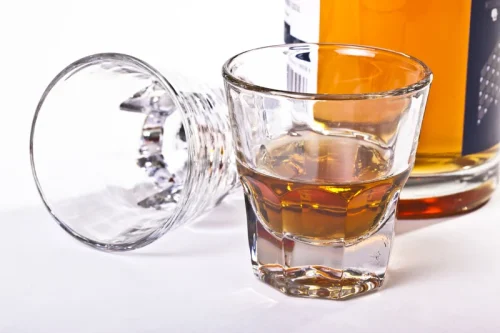
If your drinking has gotten out of control, or if you know someone who’s struggling with alcohol abuse, our Wilkes Barre alcohol treatment can help. If you think you might have an alcohol problem, discuss it with a healthcare provider. They can offer advice on how to approach your treatment and assist you with the process of detoxing, withdrawing, and recovering https://ecosoberhouse.com/article/5-ways-to-destress-after-work/ from alcohol use disorder. Everyone’s experience with alcohol is different, but effective treatments are available, whether your condition is mild, moderate, or severe. Alcoholism is influenced by a number of hereditary and environmental factors. For example, if you’re genetically predisposed to addiction, you may be more likely to struggle with alcoholism.

Comprehensive Treatment Strategies for Alcohol Abuse and Alcoholism
One of the key differences between alcohol abuse and alcoholism is the presence of physical dependence and craving. Alcohol abuse does not typically involve physical dependence or a compulsive need to drink. Individuals who abuse alcohol may experience negative consequences due to their drinking behavior, but they do not exhibit the same level of physical dependence or craving as those with alcoholism. One of the defining characteristics of alcoholism is physical dependence on alcohol. Prolonged and excessive alcohol consumption can lead to changes in the brain and body, resulting in the development of tolerance and withdrawal symptoms.

Support and Resources for Recovery

A heavy drinking binge may even cause a life-threatening coma or death. This is of particular concern when you’re taking certain medications that also depress the brain’s function. Health professionals sometimes prescribe medications to reduce the symptoms of withdrawal. Other medications can help you quit drinking by suppressing alcohol cravings or making you feel sick when alcohol enters your body. Many people with AUD continue to drink even as they develop health problems related to drinking.
- Alcohol poisoning can get dangerous quickly, and it’s sometimes fatal.
- However, if left unchecked, alcohol abuse can progress to a more severe condition.
- Key indicators of alcohol abuse include drinking in dangerous situations, experiencing recurring alcohol-related legal problems, and continuing to drink despite persistent interpersonal issues caused by alcohol.
- Alcohol dependence and alcohol abuse were two designations previously recognized in the DSM-IV.
- It can also lead to serious symptoms like seizures, fever, or hallucinations, and can be a medical emergency.
- The Diagnostic and Statistical Manual of Mental Disorders, Fifth Edition (DSM-5), provides criteria for diagnosing AUD, which includes a spectrum of behaviors from mild to severe.
Inpatient vs. Outpatient Addiction Treatment
You find yourself needing to drink larger quantities of alcohol to get the same mind-altering effects. When you call our team, you will speak to a Recovery Advocate who will answer any questions and perform a pre-assessment to determine your eligibility for treatment. If eligible, we will create a treatment plan tailored to your specific needs. If The Recovery Village is not the right fit for you or your loved one, we will help refer you to a facility that is. Unveiling gender, ethnic disparities, and unique challenges in accessing treatment. “Do I have a hangover or alcohol poisoning?” Unravel the difference and know when to seek help.
The Centers for Disease Control and Prevention says most people who abuse alcohol are not alcohol dependent.[3] They may have poor habits that put them at risk for a chronic condition like alcoholism. But they don’t have the brain changes and behavior changes that make it hard for them to quit when they want to. Understanding the difference between alcohol abuse and alcoholism will help you determine the extent of your drinking problem.
What is Zohydro Addiction?
Discover what is sober living, its benefits, rules, and the support you can expect on the path to recovery. Discover if a chemical imbalance causes anxiety and explore the latest research on anxiety treatments. Unravel the proper detox definition, debunk myths, and explore natural detoxification for better health. distinguish between alcohol abuse and alcoholism Unveiling the dark truth about what type of drug is heroin and its devastating impact on health. Explore the difference between oxycodone and hydrocodone, their uses, risks, and how they affect your health. Explore what environmental factors inspire addiction, from cultural influences to urban stress.
So, you don’t have to wait until alcohol use feels uncontrollable before reaching out for help. If you want to cut back on your drinking — or quit drinking alcohol altogether — you have plenty of options. If you or a loved one show signs of overdose, contact your local emergency services immediately. Alcohol poisoning can get dangerous quickly, and it’s sometimes fatal.
- These treatments can help people reduce how much they drink or stop drinking altogether.
- With ongoing support and treatment, though, many people can manage their drinking and live healthier lives.
- The only way to treat this serious disorder effectively is through professional therapeutic interventions, such as behavioral modification, support groups, motivational therapy, and antidepressant medications.
- You can also visit the SAMHSA site to search for alcohol and drug rehab centers anywhere in the United States.
They may also experience withdrawal symptoms when they attempt to cut back or stop drinking altogether [5]. In contrast, individuals with alcoholism struggle with controlling their drinking. They experience a loss of control and find it difficult to limit the amount or frequency of their alcohol consumption, despite a desire to do so. Compulsive drinking becomes a central focus in their life, often overshadowing other responsibilities and priorities. People with alcoholism can develop withdrawal symptoms, including seizures. Both alcohol abuse and alcoholism can be successfully treated using a combination of therapies, including medications, behavioral therapy, and support groups.
